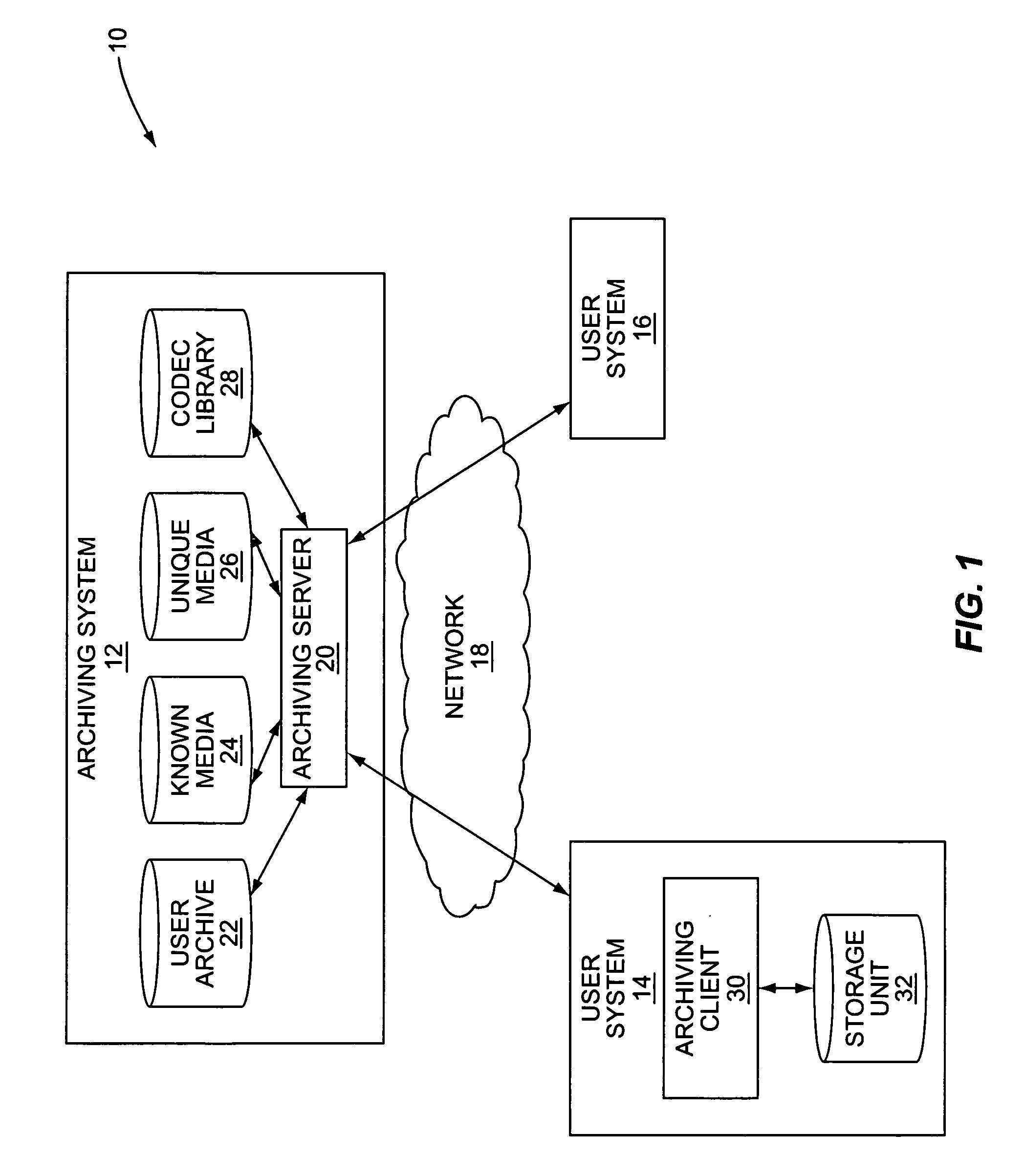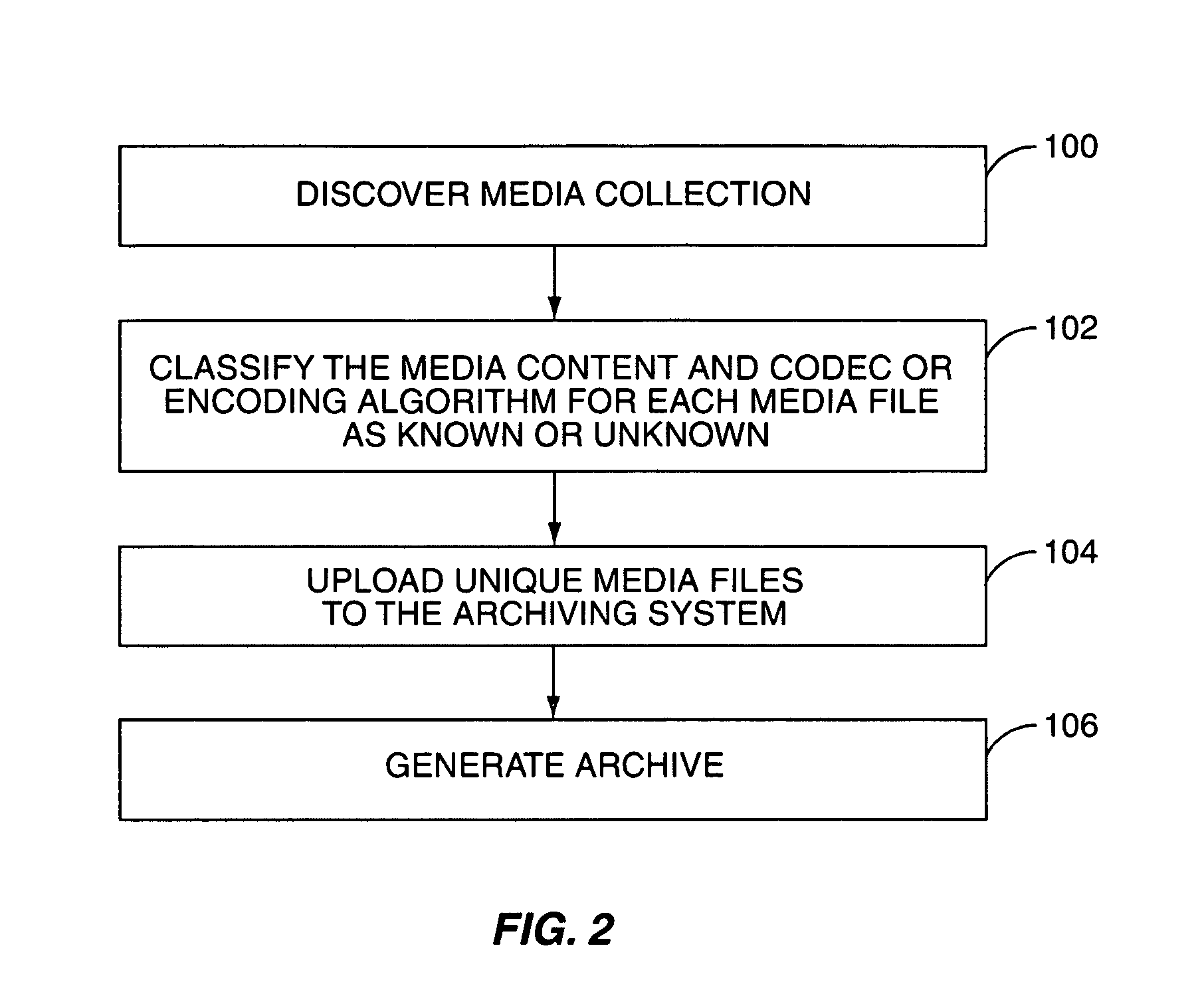System and method for archiving a media collection
- Summary
- Abstract
- Description
- Claims
- Application Information
AI Technical Summary
Benefits of technology
Problems solved by technology
Method used
Image
Examples
first embodiment
[0033]FIG. 3 is a more detailed illustration of the operation of the system 10 of FIG. 1 according to the present invention. First, the archiving client 30 interacts with the archiving server 20 to register a user of the user system 14 with the archiving system 12 (step 200). Registration may include providing information identifying the user to the archiving system 12. The information identifying the user may include, for example, the name of the user, home address, telephone number, email address, and the like. In addition, the user may be asked to enter demographic information such as, for example, age, sex, and marital status, and various user preferences such as, for example, favorite music genre, favorite music artist, or the like. Next, the archiving client 30 discovers the user's media collection (step 202). More specifically, the archiving client 30 may scan the storage unit 32 to discover the media files in the user's media collection.
[0034]In this embodiment, the archivin...
second embodiment
[0043]FIG. 4 is a more detailed illustration of the operation of the system 10 of FIG. 1 according to the present invention and is substantially the same as that illustrated in FIG. 3. However, in this embodiment, the fingerprints for the media files in the user's media collection are generated by the archiving server 20 rather than the archiving client 30. More specifically, after registration and discovery of the user's media collection (steps 300 and 302), the archiving client 30 obtains one or more samples of the media content of each of the media files in the user's media collection (step 304). The samples are segments of the media content of the media files. The samples are then provided to the archiving server 20, wherein the archiving server 20 generates one or more fingerprints for each media file in the user's media collection based on the samples of the media content of the media files (steps 306 and 308). From this point, the process proceeds as described above with resp...
third embodiment
[0044]FIG. 5 is a more detailed illustration of the operation of the system 10 of FIG. 1 according to the present invention and is similar to the embodiments illustrated in FIGS. 3 and 4. After registration and discovery of the user's media collection (steps 400 and 402), the archiving client 30 generates fingerprints for select ones of the media files in the user's media collection (step 404). Preferably, the select ones of the media files in the user's media collection are selected randomly. In this embodiment, the fingerprints are used, at least in part, to prevent spoofing of the archiving server 20 to obtain unauthorized copies of media files.
[0045]Next, one or more identification parameters for each media file in the user's media collection are provided to the archiving server 20 (step 406). For each media file having one or more fingerprints, the identification parameters include the fingerprints and optionally metadata, such as ID3 tags, describing the media content of the m...
PUM
 Login to View More
Login to View More Abstract
Description
Claims
Application Information
 Login to View More
Login to View More - R&D
- Intellectual Property
- Life Sciences
- Materials
- Tech Scout
- Unparalleled Data Quality
- Higher Quality Content
- 60% Fewer Hallucinations
Browse by: Latest US Patents, China's latest patents, Technical Efficacy Thesaurus, Application Domain, Technology Topic, Popular Technical Reports.
© 2025 PatSnap. All rights reserved.Legal|Privacy policy|Modern Slavery Act Transparency Statement|Sitemap|About US| Contact US: help@patsnap.com



